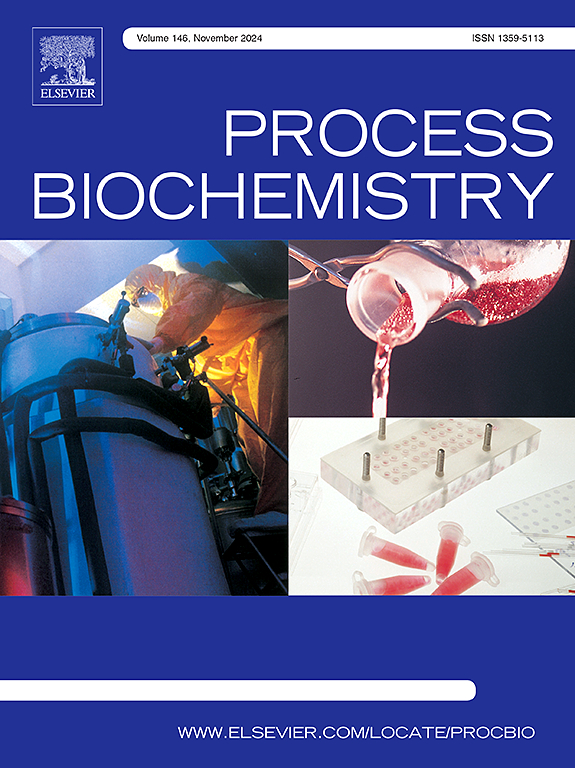AraC/XylS家族转录调控因子NdpR2正调控甜瓜鞘氨单胞菌TY的尼古丁分解代谢
IF 4
3区 生物学
Q2 BIOCHEMISTRY & MOLECULAR BIOLOGY
引用次数: 0
摘要
甜瓜鞘单胞菌(Sphingomonas melonis TY)是从烟草废弃物中分离得到的一种尼古丁降解菌。先前的研究已经阐明了烟碱在TY菌株中降解的分子机制,包括鉴定了一个参与烟碱分解代谢调节的rt -家族转录调控因子。在本研究中,我们鉴定了另一个调控基因(BJP26_RS19705,编号ndpR2),该基因编码在菌株TY中参与尼古丁分解代谢调控的AraC/XylS家族转录调控因子,ndpR2的表达受尼古丁诱导。表型分析显示,与野生型相比,ndpR2基因敲除菌株在尼古丁作用下的生长滞后期延长,尼古丁转化效率显著降低。基因互补使尼古丁降解和转化能力恢复到野生型水平。逆转录定量PCR转录分析和启动子活性分析表明,NdpR2正调控PndpA、PndpC、PndpH和PndpT启动子。此外,NdpR2表现出自身表达的正向自动调节。电泳迁移率转移实验证实NdpR2与ndpASAL、ndpC、ndfegd、ndpTB及其自身启动子的启动子区域直接结合。生化表征表明NdpR2是一种变构转录因子,2,5-二羟基吡啶是其特异性负效应物。总的来说,我们的研究结果表明NdpR2是一种新的AraC/ xyls家族调节甜瓜TY尼古丁分解代谢的调节因子。本文章由计算机程序翻译,如有差异,请以英文原文为准。
The AraC/XylS family transcriptional regulator NdpR2 positively regulates nicotine catabolism in Sphingomonas melonis TY
Sphingomonas melonis TY is a nicotine-degrading bacterium isolated from tobacco waste. Previous studies have elucidated the molecular mechanism of nicotine degradation in strain TY, including the identification of a TetR-family transcriptional regulator involved in nicotine catabolism regulation. In this study, we characterized another regulator gene (BJP26_RS19705, designated ndpR2) encoding an AraC/XylS family transcriptional regulator that participates in nicotine catabolism regulation in strain TY. The expression of ndpR2 was induced by nicotine. Phenotypic analysis revealed that the ndpR2 knockout strain exhibited both a prolonged lag phase during growth with nicotine and significantly reduced nicotine transformation efficiency compared to the wild-type strain. Genetic complementation restored nicotine degradation and transformation capabilities to wild-type levels. Transcriptional analysis using reverse transcription-quantitative PCR and the promoter activity assays demonstrated that NdpR2 positively regulates the PndpA, PndpC, PndpH, and PndpT promoters. Furthermore, NdpR2 displayed positive autoregulation of its own expression. Electrophoretic mobility shift assay confirmed direct binding of NdpR2 to promoter regions of ndpASAL, ndpC, ndpHFEGD, ndpTB, and its own promoter. Biochemical characterization revealed that NdpR2 functions as an allosteric transcription factor, with 2,5-dihydroxypyridine acting as its specific negative effector. Collectively, our findings establish NdpR2 as a novel AraC/XylS-family regulator governing nicotine catabolism in S. melonis TY.
求助全文
通过发布文献求助,成功后即可免费获取论文全文。
去求助
来源期刊

Process Biochemistry
生物-工程:化工
CiteScore
8.30
自引率
4.50%
发文量
374
审稿时长
53 days
期刊介绍:
Process Biochemistry is an application-orientated research journal devoted to reporting advances with originality and novelty, in the science and technology of the processes involving bioactive molecules and living organisms. These processes concern the production of useful metabolites or materials, or the removal of toxic compounds using tools and methods of current biology and engineering. Its main areas of interest include novel bioprocesses and enabling technologies (such as nanobiotechnology, tissue engineering, directed evolution, metabolic engineering, systems biology, and synthetic biology) applicable in food (nutraceutical), healthcare (medical, pharmaceutical, cosmetic), energy (biofuels), environmental, and biorefinery industries and their underlying biological and engineering principles.
 求助内容:
求助内容: 应助结果提醒方式:
应助结果提醒方式:


